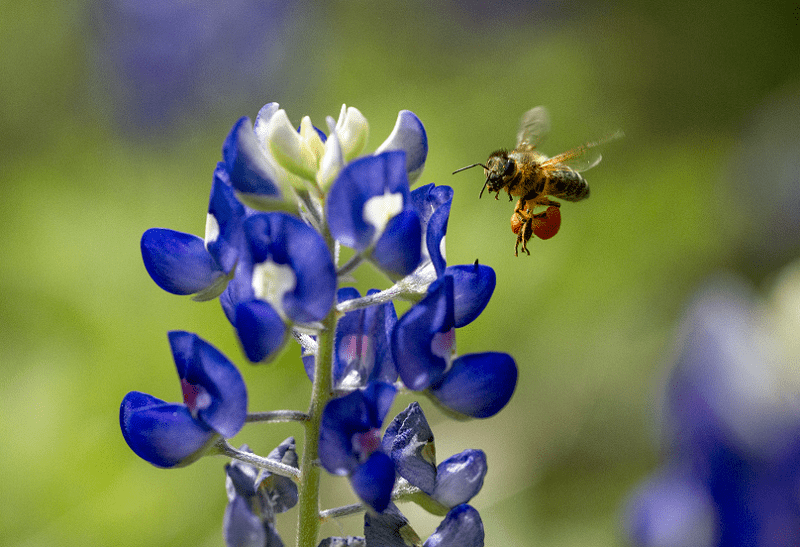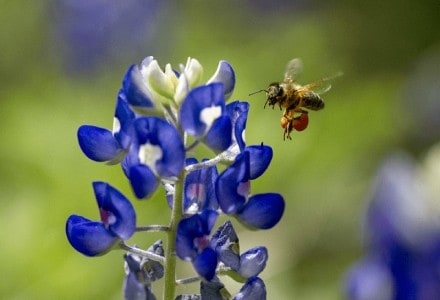
Texas Bluebonnet Facts
- Clearly, the highly distinctive name of the Texas Bluebonnet serves as one of the common names of a seemingly delicately beautiful plant. This wonderful marvel of Nature also goes by the similar alternate common name of the Texas lupine.
- The wonder of Nature and evolution also possesses the slightly complex scientific name of the Lupinus texensis. By either name, though, its remains a deceptively sturdy species. This fantastic plant also typically presents in only its base form.
- In recent years, though, this has begun to change within its naturally occurring populations. That holds true due to the surprising fact that isolated mutations of the beautiful plant have recently begun to appear in scattered portions of its range.
- For the moment, at least, botanists remain at a complete loss for an explanation for this trend. Regardless of this, though, the state of Texas officially recognizes both the original species of the flower, and all mutations of it, as the official state flower.
- Despite these factors, the Texas Bluebonnet seems to be maintaining a population base that’s both sufficent and stable. This also appears to hold true throughout the entirety of its range. The IUCN, therefore, currently lists it as Least Concern.
- It must nevertheless be considered to be at some risk. It presently faces numerous threats to its continued existence. These include habitat loss and human expansion. Like many species, however, its greatest threat most likely consists of climate change.
Related Articles
Fairy Lantern Maguire Daisy Rosy Periwnkle
Texas Bluebonnet Physical Description
The truly stunning Texas Bluebonnet boasts several physiological characteristics that make it worthy of note. The amazing plant actually has quite humble beginnings, though. That holds true due to the fact that this gorgeous plant begins its life as an extremely tiny seed.
That tiny source of life boasts an extremely tough outer layer, however. It’s so tough, in fact, that it often takes months, or even years for the weather to erode the outer layer. This means that germination quite often never has the chance to occur, depending on weather.
Once germinated, however, the tiny seedling of the species most commonly appears in the Fall. The undeniably stunning plant also evolved as a biennial species. The flora additionally grows slowly during the winter and does not attain full growth until the onset of Spring.
But, once the gorgeous flora does reach its full growth, the flower typically reaches a maximum height measuring around 24 in (60 cm). In addition to its size, the magnificent Texas Bluebonnet also presents a striking visual image to those who encounter it.
In point of fact, the individual specimens boast some stunning colors. Individuals plants primarily develop as dark blue in color. But, although rare, variations in this basic pattern do sometimes occur. The colors of these isolated mutations include pink, maroon, and white.
- Kingdom: Plantae
- Phylum: Angiosperms
- Class: Eudicots
- Order: Fabales
- Family: Fabaceae
- Genus: Lupinus
- Species: L. texensis
Photographer: stickywikit
CC License: https://bit.ly/1ryPA8o
Texas Bluebonnet Distribution, Habitat, and Ecology
Unfortunately for those who appreciate its beauty, the Texas Bluebonnet only inhabits a small section of the globe. That’s because it only lives in a small part of the continent of North America. Specifically, it mainly appears in the state of Texas, in the United States.
The species nevertheless also appears in smaller, widely scattered populations in the states of Florida, Oklahoma, and Louisiana. Even within this highly restricted range of habitation, however, this botanical marvel shows decided preferences for the regions it inhabits.
In point of fact, and rather surprisingly, these generally constitute relatively inhospitable regions. The species most often prefers loose, often rocky soil. The truly beautiful flower also commonly grows in uncultivated areas, including prairies, and along roadsides.
The beautiful Texas Bluebonnet also most typically grows in areas of direct sunlight. In such a setting, its dazzling color scheme typically creates a visually dynamic effect to observe. Its inherent beauty, as is often the case in Nature, conceals a dangerous attribute, however.
That holds true due to the fact that this delicate wildflower also lists as moderately toxic. Yet, it does not generally pose a threat to humans unless ingested. Meanwhile, the gorgeous Angiosperm also serves as an important food source for several species of butterflies.
Species Sharing Its Range
Bald Eagle Texas Horned Lizard Calleta silkmoth
Check out our other articles on 7 Highly Unusual Lakes, Spotted Handfish, Hogenakkal Falls, Saint Francis’ Satyr Butterfly, Javan Rusa, Little Penguin, Mary River Turtle, Purple Frog

